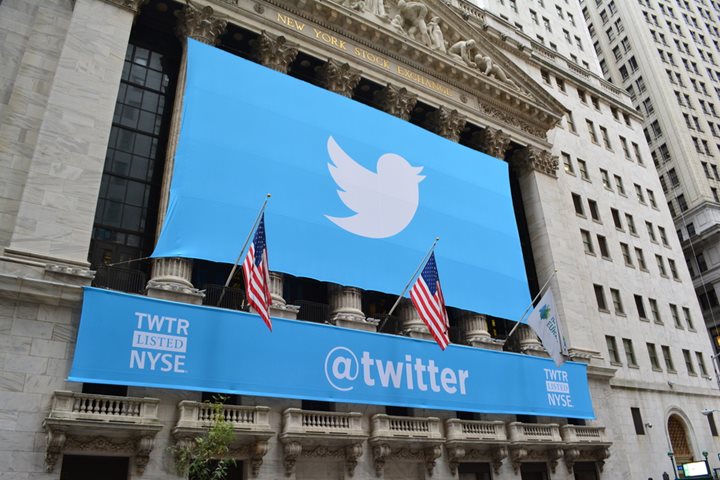Despite its recent small rise in the stock market, some investors still retain a bearish view of social media site/application Twitter (NYSE:$TWTR). However, when one considers the social media’s small user growth compared to competitors like Facebook (NASDAQ:$FB), a decrease in revenues generated from advertisements, poor profits, and multiple top executives leaving, the bearish view some investors carry for Twitter starts to make sense.
Still, views can change. Below are several ways that investors think Twitter could come back from its seemingly endless spiral.
Replacing the CEO
Jack Dorsey, co-founder of Twitter, returned to his former CEO position at the company in late 2015. Knowing that Dorsey has lead the company before, some investors thought he could help Twitter get back to its former glory. There was just a little hiccup: instead of stepping down from his CEO position at digital transactions company Square (NYSE:$SQ), Dorsey kept the job. Now, he splits his time between both Square and Twitter.
The split time may not be a problem had Dorsey’s plan to fix Twitter worked. In an attempt to revamp the falling social media site/app, Dorsey initiated the “Moments” tab with the goal to decrease tweet clutters with topics curated by the user. But the “Moments” tab never caught on, thanks to rising popularity of Snap’s (NYSE:$SNAP) Snapchat Stories and Facebook’s Instagram Stories. Both Stories functionings pulled away potential advertisers for Twitter’s “Moments”.
Following the unsuccessful “Moments” addition, Dorsey announced a number of layoffs and then attempted to sell the company — quite a red flag for investors in regards to Twitter’s long-term future. Dorsey’s actions have lead many investors, traders, employees, and consumers alike to wonder if Twitter may be better off with a CEO that focuses solely and commits themselves fully to the social media company.
Stop Lowering Ad Prices
Despite a rise in monthly active users (MAU), Twitter’s revenues from advertisements have decreased year-over-year for two consecutive quarters. This is because, in an attempt to attract and win back advertisers, Twitter has lowered its ad prices by almost 60% year-over-year last quarter.
During a conference call last quarter, Twitter’s chief financial officer (CFO) said that by lowering ad prices, the social media company could attract advertisers with improved ROI. While the ROI would definitely improve with a cheaper ad price, Twitter’s total ad revenue will continue to fall if the discounts can’t be offset with new advertisers coming in. Facebook, in comparison, has improved its ad revenues by 51% last quarter by driving up ad prices by limiting how many ads the site can display.
Another reason that may be causing advertisers to keep Twitter at arm length is its reputation as one of the more toxic social media networks — things like cyberbullying and propaganda are common amongst the site/app. As such, several investors believe that Twitter shouldn’t lower ad prices. Instead, the company should work to develop and implement better ad products, gain back active users, and attempt to filter hurtful situations like cyberbullying.
Implement Features Like Weibo
Weibo (NASDAQ:$WB), sometimes known as the Chinese version of Twitter, have been surpassing Twitter when it comes to MAU growth and ad revenue. In the last quarter, Weibo’s MAUs went up by 30% year-over-year last quarter to reach 340 million and its ad revenue jumped by 71%. Meanwhile, Twitter’s MAU went up by 6% year-over-year last quarter to reach 328 million and its ad revenue fell by 11%. In addition to some serious growth, Weibo is also profitable by both GAAP and non-GAAP metrics while Twitter only profits on non-GAAP metrics.
Looking at these numbers, it would only make sense for Twitter to try and implement some of Weibo’s features. Weibo has monetized live videos with a feature that allow viewers to buy virtual gifts for broadcasters, removed its 140-character limit, organized discussion topics by categorizing them like Reddit, and implemented Facebook-like inline comments. Wibo has also integrated its site/application with SINA’s (NASDAQ:$SINA) news portal as well as Alibaba’s (NYSE:$BABA) e-commerce site.
All these new improvements have no doubt upped Weibo’s usability and helped attract more active users. As such, if Twitter were to follow Weibo with similar improvements instead of sticking to tradition, investors believe the company have the potential to rise up from its current situation.
Cut Down Stock Bonuses
The reason why Twitter is only profitable on non-GAAP metrics is because of the company’s expenses from stock-based compensation (SBC). Even with a 22% decline to of an annual $117 million last quarter, SBC still took up 21% of Twitter’s total revenue.
SBC is something that can seriously lower cash flow of a company. Although Dorsey have upped Twitter’s free cash flow by laying off employees and selling Twitter’s small insignificant businesses, these fixes are only a bandaid to a gun wound. Considering long-term prospects, Twitter should lower its SBC so that it can work towards profiting in GAAP metrics and improve its recent poor profits.
Summary
While it could help Twitter get out of its slump if the company would implement the suggestions listed above, several investors still retain a bearish view of the stock. This is because suggestions are just that — suggestions. Some investors don’t believe that Twitter will implement any of the actions listed above any time soon.
It would be difficult to replace Dorsey with another CEO and to raise the ad prices once it is lowered. As well, Twitter is probably too proud to start implementing features similar to Weibo. Cutting down SBC could also lead to difficulties regarding hiring and competing for talented executives and employees.
For now, Twitter’s future remains uncertain. If investors still wish to invest in the social media site/app, it would probably be best to do thorough research and have a clear idea on where the company sees itself in the long-term.
Featured Image: depositphotos/cpenler









